In the RV world, you would think the drivable categories’ would follow a logical pattern. Class A motorhomes are the biggest, which makes sense. Class C RVs are the second-largest but use the alphabet’s third letter as its category label. There is a logical explanation.
If you’re considering a Class C RV, come with us as we explore everything you need to know about the youngest category of drivable RV. You’ll learn about standard features, why it’s so popular among many different audiences, and what you can expect from a Class C motorhome camping experience.
Key Points
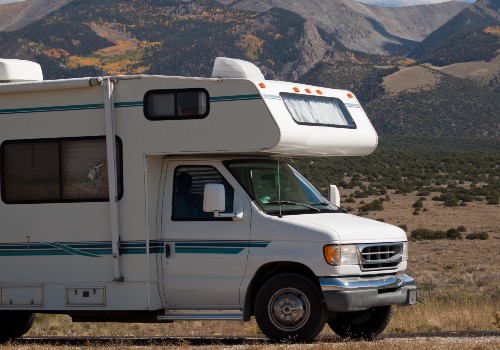
- Easier to drive than a Class A and more interior space than a Class B
- Massive rear storage like a fifth wheel in some models
- Best family-friendly RV of all the drivable categories
- Average length of a Class C motorhome is 20-40 feet
- Average gas mileage for a Class C motorhome is 14-18 mpg
What Is a Class C RV?
The Class C motorhome is the most popular of all the drivable motorhomes. Its iconic loft over the driver’s area is easy to spot. RV manufacturers build Class C motorhomes on van or pickup truck chassis.
RVers choose the Class C motorhome because it’s the perfect middle-ground between the behemoth Class A and the fuel-efficient Class B. The difference between Class A and Class C RV categories are numerous. Class C RVs sleep more people, have better gas mileage, and are generally easier to drive.
The difference between Class B and Class C RV categories are significant as well. The increased interior and storage capacity allows families to enjoy the space comfortably. Realistically the difference in fuel efficiency is a matter of an extra fill-up or two on most RV trips.
Which Came First: the Class A or the Class C RV?
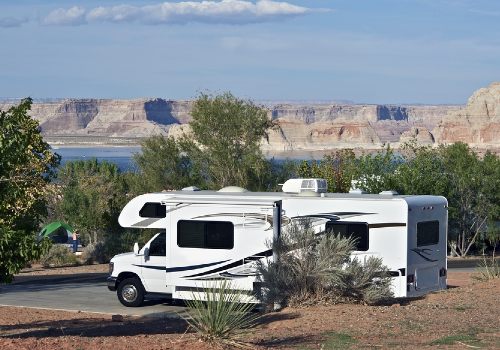
Would it surprise you to learn that the Class A RV was the first drivable category? Shortly after Henry Ford’s Model T started showing up on American roads, people started custom designing their own drivable RVs that fit into the Class A category.
The first mass-produced Class A was the 1960s Dodge Travco. The Class B campervan was in full production since the late 1940s in Europe. Some Volkswagon Bus campervans had already made their way to the United States in time for the counter-culture hippie movement of the 1960s and 1970s.
Early examples of the Class C RV existed before 1970, but it was the age of the “micro-mini motorhome” that gave it traction. The first versions of the Class C motorhome were ideal for two people. Original chassis included quarter-ton pickups and lower duty vans like the second generation Ford Econoline 100.
Big-brand companies like Winnebago and independents would order quarter-ton pickup truck chassis from Toyota by the hundreds to permanently attach truck camper coaches to them. Toyota Class C RVs had a 28-year production period from 1972-1990. Today, fan clubs still get together in their (as they refer to them) “C-minus motorhomes.”
The Toyota Class C motorhomes weren’t the only game in town. Dodge, Chevrolet, GMC, and Ford made their mark in the Class C RV category through RV manufactures’ many products each year on these domestic chassis.
Super C Motorhome
The RV industry and Freightliner have had a great relationship. The truck chassis manufacturer has been a leader in the heavy truck industry for decades. Their M2 Chassis gives the RV industry the ability to craft luxury Class C motorhomes with front diesel engines.
From their outside appearance, these motorcoaches look like an RV with a big rig front end. The RV measures 40-feet in length on average. The interiors have the best materials, decors, and near residential features. Some models are waiting for you at your local RV dealership, while others are custom order only.
Class C Toy Hauler Motorhome
The Thor Outlaw series has a Class C RV toy hauler version. The rear third of the coach has a garage to house your motorized adventure toys while you travel. This does shorten the interior, but the garage has livable space with a bed, its own climate control, and an entertainment center.
You can learn more about toy haulers from our feature article. We also have a complete walkthrough of the Thor Outlaw series on our RV Troop website.
B Plus Motorhome
Sometimes, the difference between a Class B and a Class C RV boils down to a few different features. A significant portion of B plus motorhomes are Class C RVs. RV makers replace the overhead loft with an aerodynamic cap. Removing the attic turns the C into a B plus.
Designers place an entertainment center in the space with A/V storage. B plus RVs are built on either super-duty chassis like traditional Class C RVs or the European-style van chassis of the Class B. This difference in chassis makes the B plus one of the most diverse categories.
Class C Motorhome Specification Ranges
| Lengths | 20-40 feet |
| Sleep | 4- 10 people |
| Fuel Type | Gas or Diesel |
| Price | $50,000-$250,000 |
Gas Mileage of a Class C RV
The average Class C gas mileage ranges between 14-18 miles per gallon (MPG). Van chassis like the Ford Transit and Mercedes Sprinter will have better fuel-efficiency than the Super-duty and Freightliner versions.
If you want to improve your RV gas mileage, there are ways to eke out another 2-3 mpg. Keep your tire pressure at peak levels, keep up with all of your preventive maintenance, and lighten your overall weight. On long trips, this can save you a tank or two.
Popular Chassis
The three most popular RV chassis are the Ford Class C RV, Mercedes Sprinter Class C RV, and the Freightliner Class C RV chassis. These aren’t the only chassis used in the RV industry. GM and Chrysler have a presence too.
- Chevrolet Express 6.0L V8 323 hp @ 373 lb./ft.
- Dodge Ram 5500 SLT 6.7L IS Cummins Turbo Diesel- 360 hp @ 800 lb./ft.
- Ford Transit 3.7L V6 Duratec 275 hp @ 260 lb./ft.
- Ford E-450 Super Duty 7.3L V8 Triton- 300 hp @ 425 lb./ft.
- Ford F-550 Super Duty 7.3L V8 Triton- 430 hp@ 475 lb./ft.
- Freightliner M2 106 Cummins 8.9L ISL Turbo Diesel 350 hp @ 1,150 lb./ft.
- Mercedes 3500 XD 3.0L V6 Turbo Diesel- 188 hp @ 325 lb./ft.
Popular Class C RV Manufacturers
The Big Four (Forest River Inc., REV Group, Thor Ind., and Winnebago Ind.) are the dominant manufacturers of Class C motorhomes. There are a few independents that are making their mark in the category that are worth looking at. When you go to an RV show or your local RV dealer, here are the names you’ll see:
| BRAND | MANUFACTURER |
| Coachmen | Forest River Inc. |
| Dynamax | Forest River Inc. |
| Forest River | Forest River Inc. |
| Gulf Stream | Independent |
| Jayco | Thor Ind. |
| Nexus | Independent |
| Renegade RV | REV Group |
| Showhauler | Independent |
| Thor Motorcoach | Thor Ind. |
| Tiffin | Independent |
| Winnebago | Winnebago Ind. |
Great Examples of Class C Motorhomes
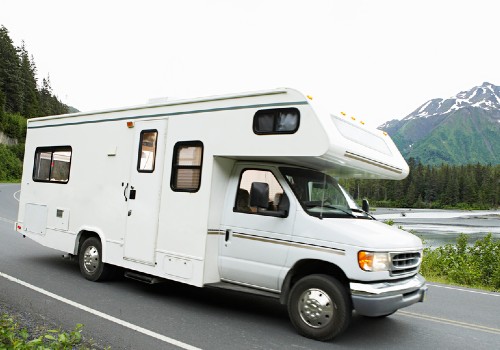
With a 20-foot difference and many different chassis, simply wanting a Class C RV is as vague as saying you want a car. To help you narrow down the field, here’s a list of popular Class C motorhomes that are excellent examples within the category. If you’re looking for a specific feature, use these to guide you.
| The Best Small Class C RV | Coachmen Cross Orion 23.9 |
| The Cheapest Class C RV | Gulf Stream BT Cruiser |
| The Best Luxury Class C RV: | Tiffin Wayfarer |
| The Best 4×4 Class C RV | Thor Omni Super C 4WD |
| The Best Class C RV for Winter | Jayco Redhawk |
| The Best Class C RV for Full-Time Living | Forest River Sunseeker |
| The Best Class C RV With Bunk Beds | Coachmen Leprechaun |
Features You Can Expect In a Class C Motorhome
Whether you choose an entry-level or fully-loaded luxury model, there are plenty of standard features to look for in a Class C RV. One feature you won’t find in Class C RVs is leveling jacks. Using RV blocks or 2x4s under the rear tires can raise the right side. Otherwise, repositioning is best.
Kitchen
Expect to find a full kitchen inside the motorcoach. There are plenty of Class C RVs with outdoor kitchens too. Interior refrigerators can be as large as 12 cubic feet. Stove and ovens can fit residential-sized cookware for family-sized meals.
Living Room
Sofas will easily seat 2-3 people. Standard dinettes seat four while U-shaped versions seat six. RV manufacturers understand that these family-friendly motorcoaches need to be comfortable and functional for everyone you’re bringing along.
Bedroom
Loft beds can hold anywhere between 200-750 pounds. Space-saving Class C RVs come with murphy beds, while full-length Class C RVs have king-size beds. Families might want to look at Class C RVs that come with bunk beds to give your kids their own space.
Bathroom
Most Class C motorhomes have dry bathrooms. You’ll either see all-in-one or split versions depending on the floorplan. Despite the limitation of the driver’s area, Class C RV floor plans are more diverse than the other drivable categories.
Storage Tanks
Like the Class A, Class C motorhomes have three separate holding tanks. The freshwater and grey water will measure around 30-50 gallons. Black tanks can be as small as 20 gallons but as large as 40. To maximize fuel-efficiency but travel safely, never travel with more than a ½ tank of freshwater to keep your weight down.
Power and Propane
The onboard propane tank can be accessed through one of the exterior storage bays. It powers the water heater, stove, oven, RV refrigerator, and outside cooking devices.
Besides shore power, the RV has house batteries that power the coach section when it’s not plugged in. Bigger Class C motorhomes come with built-in gas generators. You can also have a solar panel system installed on the roof. Today’s RVs have prewiring for solar inputs.
Coach Technology
Class C motorcoaches will have everything you’ll want for your audio and video entertainment desires. If you have a B plus, the TV above the driver’s section may not work while you’re traveling. While the coach is in motion, this safety feature keeps the driver from becoming distracted.
Driver Area
When the law stating that all new vehicles (as of 2018) must have backup cameras took effect, that included motorhomes. The RV industry was one of the first industries to provide backup cameras for drivable vehicles since the late 1980s.
Today’s Class C motorhome camera systems have side cameras that work based on the turn signal. When you activate the signal, the dashboard LED screen will show that particular side of the RV, giving you a perfect view of your blindspots and oncoming traffic. Ford’s Driver Assistance Pack comes with many mid and top-end Class C RVs. the system includes automatic braking, lane departure alert, blindspot alerts, automatic high beams, and other features that make traveling easier.
Towing Capacity
Want to Connect With a Community of Over 1,078 RV Enthusiasts?
The average Class C RV towing capacity is 5,000 pounds. Super C motorhomes reach up to 30,000 pounds. Flat towing your passenger vehicle (if capable), boat, or a small travel trailer is possible. If you’re going to triple tow, make sure your state allows it, and you don’t exceed 80 feet in combined length.
Matching to Your Camping Style
It’s easy to match your lifestyle to this RV category. Whether you’re looking for a small budget-friendly unit to fulfill your wanderlust, a family-friendly Class C RV with a bunkhouse, or a 40-foot super C for full-time glamping, there aren’t too many demographics that won’t like the Class C RV category.
Positive Class C RV Review and Ratings
The first thing that attracts people to this category is the perception of driving a Class C RV. When people compare a Class A vs. a Class C RV from a driving comfort standpoint; a Class A motorhome can be intimidating.
Class C RVs drive like vans or pickup trucks in a lot of respects. You’re at the same driving level, many of the dashboard functions are in the same place, and the smaller models are closer to standard passenger lengths (yet, you’ll have the best suspension and other driving advantages most of the passenger counterparts don’t).
For those who are just entering the RV world, the overall investment makes tailgating, weekend, and part-time camping more justifiable. It’s easy to find a new Class C RV for under $60,000. For this price point, with proper maintenance, you’ll discover you purchase one of the many motorcoaches from the most reliable Class C RV manufacturers on the market.
The average length limit for national parks ranges from 25-30 feet for their campsites. Some park campgrounds have size restrictions as small as 20 feet while the more prominent parks like Yellowstone have a few spaces that fit 40 feet RVs. You can find many great Class C RVs under 30 feet that will accommodate your large family.
Other public and private campgrounds won’t be an issue. Even if you decide to take a boondocking weekend, Class C motorhomes do well fully connected or self-reliant. You never have to leave your RV to open up the slideouts or turn on the generator for those worried about security.
Is a Class C Worth It?
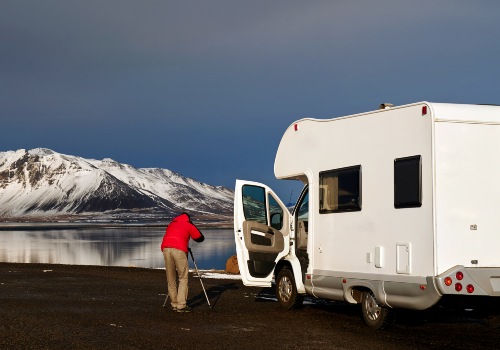
Not everyone will find living in a Class C RV the ideal camping experience. Even if you take advantage of how RVs depreciate by purchasing a used Class C RV, there are things about them, you must take into consideration.
We always recommend the “try before you buy” approach when buying an RV, especially for those with mobility concerns. Companies like Outdoorsy and RVshare allow you to rent RVs from private owners.
Most Class C interiors have steps. There’s a step down into the driver’s area and a step up into the master bedroom. When the slides are in travel mode, space can be tight and difficult to navigate down the center aisle. Getting to the restroom or the bedroom could be a hazardous effort.
Except for super Class C RVs, appliances reach near residential levels. Other sizing issues you should consider is the maximum weight on the loft space. Some hold as little as 250 pounds. When you think about a person and all of their gear up there, this isn’t much weight.
No drivable category is truly four-season capable. Class C RVs like the Jayco Redhawk has features that make it better for late RV season camping. This particular model can keep you comfortable in colder late fall night temperatures. If you plan on heading into the Canadian Wilderness in January, there are steps you need to take to survive those temperatures.
More than half of all RVers are pet-lovers. Of those pet lovers, 90% of those families have canine furbabies. Class C RVs work well for your Pomeranian, Beagle, or Scottie. When it comes to the larger working-class breeds, it’s going to be tight. Even greyhounds won’t have much room to stretch out those few times they get up from the couch.
The Next Step
Now that you know what to expect, you can continue to our RVtroop.com website to view the current RV industry’s latest models. We’ll walk you through all of the best features without brand or dealer bias, so you can decide for yourself which model is right for you.
We also have links to all of the other RV categories and models. Once you decide on the right type for you and your family, rent a few with different floor plans, so you can get first-hand experience on what works best. Between your experience and your RVtroop knowledge, you’ll save yourself thousands when you’re ready to buy.
"Man cannot discover new oceans unless he has the courage to lose sight of the shore."
-- Andre Gide


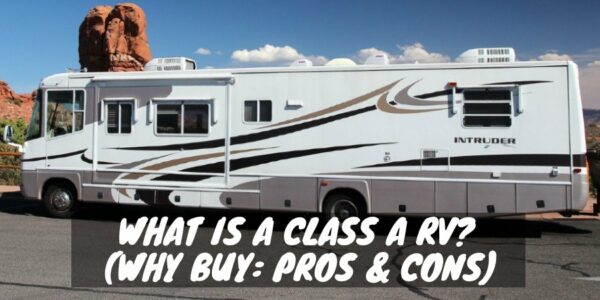









“Average gas mileage for a Class C motorhome is 14-18 mpg”
In my experience, it’s more like 6-9 mpg in real-world driving.
I agree 14-18 mpg is wildly optimistic. I get about 9.5 mpg driving conservatively in a 28′ class C powered by GM 6.0l with 6 spd carrying a 250cc motorcycle. For comparison our previous class A Ford chassis 35′ long coach got 6.7 mpg and when not towing I get 17-18 mpg from my 5.3l Silverado on mostly rural roads.